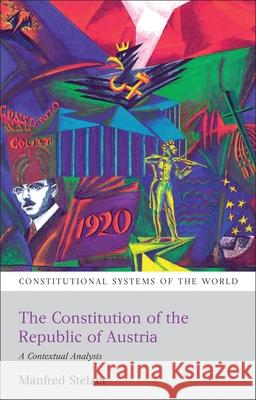The Constitution of the Republic of Austria : A Contextual Analysis » książka
The Constitution of the Republic of Austria : A Contextual Analysis
ISBN-13: 9781841138527 / Angielski / Miękka / 2011 / 294 str.
The Constitution of the Republic of Austria : A Contextual Analysis
ISBN-13: 9781841138527 / Angielski / Miękka / 2011 / 294 str.
(netto: 143,49 VAT: 5%)
Najniższa cena z 30 dni: 146,03 zł
ok. 22 dni roboczych.
Darmowa dostawa!
The Constitution of the Republic of Austria originated in 1920. From the beginning, it represented a compromise between deeply-opposed political parties with widely divergent moral and political principles. The Constitution deliberately lacked substantive content, was formal in character, and was concerned only with the framework for the everyday political process. Constitutional amendments were, and remain, rare events. As a result, case law interpreting the Constitution tended to be conservative in outlook. Controversial cases were considered a matter for constitutional amendment rather than constitutional interpretation. In the 1980s, the Constitutional Court adopted a more expansive constitutional jurisprudence, especially in the field of fundamental rights. While this was to some extent an inevitable result of the influence of the European Court of Human Rights, it meant, for instance, that the principle of proportionality became enshrined in Austrian fundamental rights theory. The Constitutional Court even saw fit to set limits to Parliament's power to amend the Constitution. Becoming a Member of the European Union in 1995 presented Austria with new challenges, leading inevitably to the creation of a Constitutional Convention and, eventually, major amendments to the Constitution in 2008. Written in an accessible style by an expert in the field, this book shows how the Austrian Constitution has been shaped and interpreted by the fundamental events in Austria's modern history. At the same time, it emphasizes the way in which the Constitution establishes a parliamentary system, with additional presidential features, limited, in turn, by Austria's federal structure and the parliaments of nine states.











